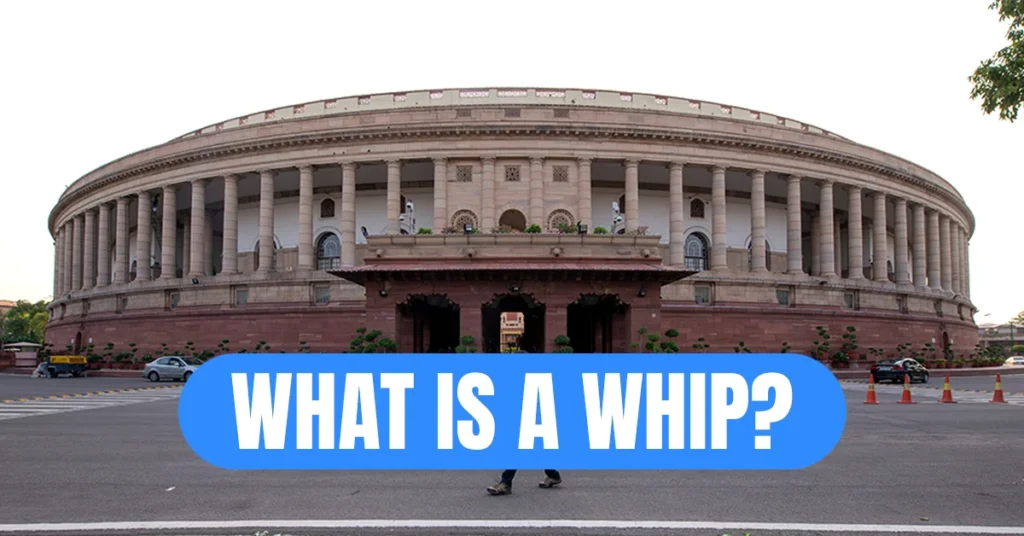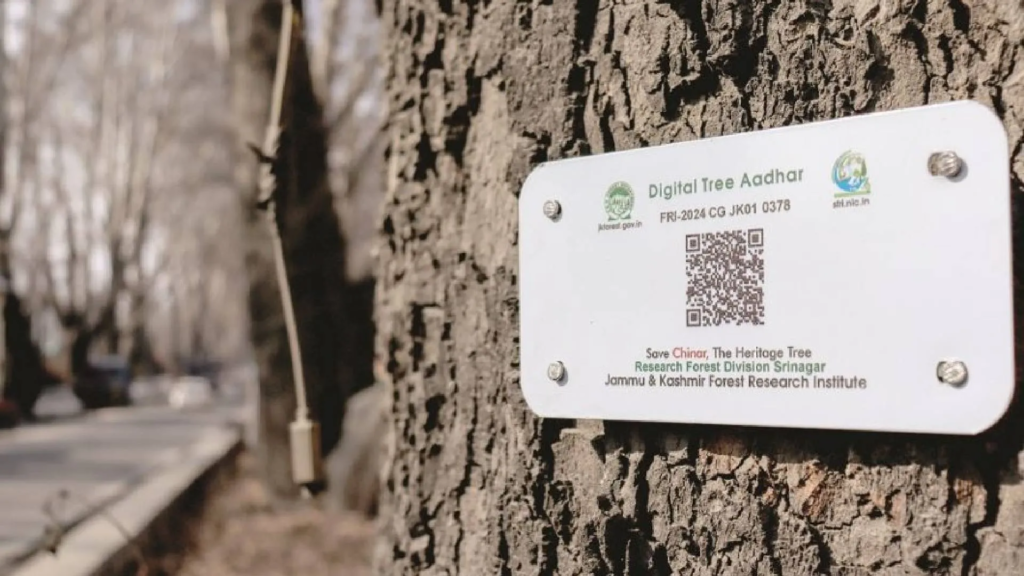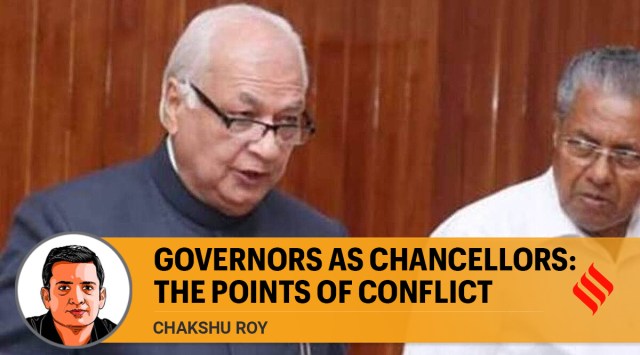Decode Politics: What is the whip system that Jagdeep Dhankhar wants abolished, how it came to be adopted
Source: The Indian Express
Syllabus: GS II Polity and Governance
Understanding the Whip System in Indian Parliament: Types, Roles, and Significance
Introduction
The whip system is a cornerstone of parliamentary democracy in India, crucial for maintaining party discipline and ensuring effective governance. It derives its name from the English hunting term “whipper-in,” used to describe maintaining control over a pack. Politically, the term was popularized by Edmund Burke in the British House of Commons to denote rallying party members.
Whip System in India: An Overview
Introduced during India’s parliamentary evolution, the whip system is integral to legislative functioning, particularly during critical votes. It operates within the framework of the Anti-Defection Law (1985), which ensures MPs adhere to party directives, thereby safeguarding party integrity and democratic stability.
Purpose and Importance
- Ensuring Party Discipline:
- The whip system mandates MPs to align with party decisions, fostering unity during critical legislative processes.
- Non-compliance can lead to embarrassment or legislative instability for parties.
- Significance in Division Voting:
- During division votes, ruling coalitions rely on strict adherence to exhibit their majority.
- Failure to comply can undermine the government and even result in a no-confidence motion in the Lok Sabha.
- Protecting Parliamentary Democracy:
- It balances individual freedom and collective responsibility. While internal disagreements can be raised within the party, MPs must ultimately align with the party’s stance to maintain accountability.
Types of Whips
- One-Line Whip: Informative in nature, it requests attendance but permits members to abstain.
- Two-Line Whip: Directs attendance but leaves voting discretion open.
- Three-Line Whip: The strictest directive, requiring attendance and voting per party instructions.
- Violation of a three-line whip may lead to disqualification under the Anti-Defection Law upon recommendation by the party leader to the presiding officer.
Key Roles and Structure
- Party Chief Whip: Acts as a conduit between party leadership and MPs, ensuring attendance, discipline, and coherence during debates and voting.
- Government Chief Whip:
- In the Lok Sabha: The Minister of Parliamentary Affairs assumes this role, coordinating with alliance leaders.
- In the Rajya Sabha: The Minister of State for Parliamentary Affairs performs the function.
- Support Whips: Additional whips assist in maintaining order within party ranks.
Criticism and Contemporary Debate
Recently, Vice President Jagdeep Dhankhar criticized the whip system, arguing that it curtails MPs’ freedom of expression and enforces servility by compelling adherence to the party line. Critics assert that this restricts independent judgment and hinders robust democratic debate. However, the Supreme Court has upheld the system’s necessity, emphasizing its role in maintaining governance stability and preventing legislative chaos.

Consequences of Violating a Whip
- Ruling Alliance Members: Defying a whip can result in disqualification under the Anti-Defection Law.
- Opposition Members: Though non-binding legally, non-compliance risks internal party penalties, such as expulsion.
Platforms for Exchange
Since 1952, the All-India Whips Conference, organized by the Ministry of Parliamentary Affairs, serves as a forum for whips from all parties to exchange views, improve coordination, and strengthen parliamentary practices.
Conclusion
The whip system, despite criticisms, remains indispensable for ensuring discipline and coherence in Indian parliamentary democracy. It balances individual and collective responsibilities while reinforcing the accountability of MPs to their parties and the electorate. The evolving debate highlights the need for nuanced reforms to strike a balance between discipline and freedom of expression in the legislature.
Geo-tagging and ‘Aadhaar’: How, why the J&K govt is trying to conserve chinar trees
Source: The Indian Express
Syllabus: GS III Environment
Geo-tagging of Chinar Trees in Jammu & Kashmir: A Conservation Initiative
Introduction
The Chinar tree (Platanus orientalis var. cashmeriana), a symbol of Kashmir’s natural and cultural heritage, is undergoing a revival with the Jammu & Kashmir government’s launch of the “Tree Aadhaar” Mission. This initiative aims to conserve the dwindling population of Chinar trees by geo-tagging and assigning unique IDs to each tree, thereby enabling systematic monitoring and protection.
Key Features of the Chinar Tree
- Characteristics:
- A deciduous tree with a vast, maple-like canopy.
- Found in cool climates with abundant water, predominantly in the Eastern Himalayas.
- Grows up to 30 metres tall with a girth of 10-15 metres.
- Takes 30-50 years to mature and 150 years to reach its full size.
- Cultural Origin:
- The name Chinar is attributed to the Mughals, derived from the Persian phrase “Che naar ast,” meaning “What flame is that?”—a reference to its crimson foliage in autumn.
Historical and Cultural Significance
- Mughal Contributions:
- The Mughals expanded Chinar plantations across Kashmir and parts of Jammu’s Chenab region.
- Emperor Jahangir planted over 1,100 chinars in Naseem Bagh on Dal Lake’s banks and established the iconic Chaar Chinari (Four Chinars) on a Dal Lake island.
- State Tree of J&K:
- Declared as the “state tree” of Jammu & Kashmir (now a Union Territory).
- A key autumn attraction, when its leaves turn crimson and golden.
- Artistic and Religious Relevance:
- Chinar motifs feature prominently in Kashmiri art forms like papier-mâché, embroidery, carpets, and walnut wood carvings.
- Found near Muslim and Hindu shrines, the tree is revered across religious communities.
- The oldest surviving Chinar tree, approximately 700 years old, is located in Chattergam village, Budgam, and was planted by a Sufi saint.

The Chinar Conservation Project
Government Regulation on Cutting Trees:
- Cutting a Chinar tree, even on private property, requires government approval to curb illegal felling.
Objectives of the “Tree Aadhaar” Mission:
- Conduct a comprehensive census of Chinar trees across the Kashmir valley and Chenab region.
- Assign a unique Tree Aadhaar ID to each tree, along with geo-tagging for precise identification and tracking.
Progress Achieved:
- As of now, 28,560 Chinar trees have been enumerated and geo-tagged, out of an estimated total of 32,000–33,000 trees.
- QR-coded metallic plates affixed to trees provide critical data, including:
- Geographic coordinates (longitude and latitude).
- Physical attributes such as age, height, girth, canopy size, and number of branches.
- Health indicators and eco-threats faced by the tree.
Challenges:
- Accessibility issues, particularly for trees located near security installations or in no-go zones.
Importance of Chinar Tree Conservation
- Ecological Role:
- Chinars act as climate stabilizers, providing extensive shade and supporting biodiversity.
- Their long life span makes them vital for ecosystem sustainability.
- Cultural and Heritage Value:
- Chinar trees are woven into the cultural fabric of Kashmir, symbolizing its rich art, literature, and history.
- They serve as tourist attractions, enhancing local livelihoods.
- Sustainable Development:
- Geo-tagging ensures informed decision-making for preservation while raising public awareness about their significance.
Conclusion
The geo-tagging of Chinar trees under the “Tree Aadhaar” mission is a progressive step towards preserving Kashmir’s heritage and ecological balance. By integrating technology with conservation efforts, the initiative ensures sustainable management of these iconic trees while addressing challenges like illegal felling and neglect. As a symbol of Kashmir’s identity, the Chinar tree’s protection is not just an ecological necessity but also a cultural imperative.
Should Governors head State universities?
Source: The Hindu
Syllabus: GS II Polity and Governance
Should Governors Head State Universities? A Critical Analysis
The Governor’s role as the Chancellor of State universities has increasingly become a contentious issue due to its politicization, erosion of university autonomy, and governance challenges, particularly in States governed by Opposition parties. This colonial-era provision, embedded in State university laws, demands a reassessment to align with the democratic and federal ethos of contemporary India.
Historical Context and Colonial Legacy
The concept of Governors serving as Chancellors dates back to British rule, where Governors were ex-officio heads of universities established in 1857 (Calcutta, Bombay, and Madras). This model aimed to maintain colonial control over academic institutions. Post-Independence, this structure was adopted wholesale without reevaluating its relevance in a democratic setup.
As Chancellors, Governors were vested with significant powers, such as appointing Vice-Chancellors, nominating members to university bodies, and approving delegated legislation under university laws. However, this setup, rather than safeguarding university autonomy, has entrenched political interference.
Challenges in the Present Context
- Politicization of the Governor’s Office:
- Initially, during the Congress-dominated era (1947–1967), Governors were largely ceremonial. However, after 1967, with States being governed by non-Congress parties, Governors became instruments of Central control, leading to conflicts with State governments.
- Studies, such as those by the Sarkaria Commission and Ashok Pankaj, reveal that Governors are often political appointees, with over 60% coming from political backgrounds, undermining the credibility and neutrality of the office.
- Governance Issues in Universities:
- Governors often bypass State governments, exercising discretionary powers to appoint Vice-Chancellors, approve regulations, and intervene in university administration. This has led to delays, administrative paralysis, and erosion of academic autonomy.
- Lack of academic expertise among many Governors further exacerbates governance issues, as decisions are often driven by political motives rather than academic considerations.
- Federalism Concerns:
- Allowing a Central appointee to exercise control over State-funded institutions violates the principle of federalism. This dual authority system creates friction and undermines the accountability of universities to elected State governments.

Insights from Committees and Commissions
- Rajamannar Committee (1969–71): Advocated that Governors should act on the advice of the State Council of Ministers even in statutory roles like that of Chancellor.
- Sarkaria Commission (1983–88): Recommended defining the Governor’s role through State laws and emphasized consultation with the Chief Minister while retaining independent judgment in university matters.
- M.M. Punchhi Commission (2007–10): Suggested limiting the Governor’s role to constitutional responsibilities and appointing eminent academicians or experts as Chancellors to preserve university autonomy.
Alternative Models for University Governance
Global best practices and State-level reforms suggest various models to reduce political interference:
- Governor as Ceremonial Chancellor: States like Gujarat, Karnataka, and Maharashtra have redefined the Governor’s role to be purely ceremonial, mandating adherence to State government advice.
- Chief Minister as Chancellor: States like West Bengal and Punjab have proposed Bills to make the Chief Minister the Chancellor, but these await Presidential assent.
- State-Appointed Chancellor: Telangana and Kerala have adopted models where eminent academicians or public figures are appointed as Chancellors, excluding politicians.
- University-Elected Chancellor: Universities in the UK, such as Oxford and Cambridge, allow their bodies or alumni to elect ceremonial Chancellors, ensuring institutional independence.
The Way Forward
Reforming the role of the Governor in university governance is crucial for ensuring accountability, academic freedom, and institutional self-governance. Key recommendations include:
- Divesting the Governor of the statutory role of Chancellor to eliminate political interference and align governance structures with global best practices.
- Facilitating the appointment of non-political, eminent academicians or public figures as Chancellors to enhance university autonomy.
- Ensuring that legislative changes proposed by States are impartially assessed and promptly approved by the Centre, avoiding unnecessary delays.
- Strengthening legislative oversight of delegated legislation in State universities to enhance transparency and accountability.
Conclusion
The persistence of the “Governor as Chancellor” model is an outdated colonial legacy that no longer serves the needs of modern academic institutions in a democratic and federal India. Reforming this structure is imperative to foster academic excellence, protect university autonomy, and uphold the principles of federalism. The Centre must facilitate these changes while respecting the aspirations of the States, paving the way for a more inclusive and robust higher education system.
Indian space programme breaks into 2025 in ‘mission mode
Source: The Hindu
Syllabus: GS III Science and Technology
Indian Space Programme Embarks on 2025 in ‘Mission Mode’
The Indian Space Research Organisation (ISRO) has ushered in 2025 with ambitious milestones that solidify India’s position as a formidable spacefaring nation. Following a year of visionary planning in 2024, the space programme has transitioned to a ‘mission mode’ with remarkable strides across key domains such as lunar exploration, human spaceflight, and advanced satellite technology.
PSLV-C60: Foundation for Chandrayaan-4 and the Bharatiya Antariksh Station
The year commenced with the PSLV-C60 mission, launched on December 30, 2024, from the Satish Dhawan Space Centre (SDSC), Sriharikota. This landmark mission laid the groundwork for two pivotal projects: Chandrayaan-4 and the Bharatiya Antariksh Station, advancing India’s capabilities in lunar exploration and low Earth orbit operations. The mission also marked India’s first successful in-orbit docking experiment, a precursor to more complex orbital maneuvers required for human spaceflight and space station operations.
SpaDeX: A Leap in Space Docking Technology
The Space Docking Experiment (SpaDeX), a critical component of the PSLV-C60 mission, demonstrated India’s ability to conduct in-orbit rendezvous and docking—a milestone previously achieved by only a handful of nations. The experiment faced initial challenges, including unexpected satellite drift, but ISRO’s iterative approach led to success on January 16, 2025. The two satellites docked and achieved synchronized control, marking a significant step toward enabling docking maneuvers for future lunar missions and the Bharatiya Antariksh Station.
POEM4: Orbital Testbed for Innovation
The PSLV-C60 mission also supported the PSLV Orbital Experimental Module (POEM4), an innovative platform carrying 24 payloads from ISRO, academia, and private industry. Key achievements included:
- Successful movement by ISRO’s Relocatable Robotic Manipulator.
- Germination of cowpea seeds in space under the Compact Research Module for Orbital Plant Studies (CROPS).
- Demonstration of green propulsion by Manastu Space and Bellatrix Aerospace’s RUDRA system, both showcasing advancements in fuel efficiency and sustainability.
- Contributions from private and academic payloads, such as N Space Tech’s SwetchaSAT-V0, which tested advanced communication systems, and Amity University’s APEMS, which furthered orbital plant growth research.
Boost to Indian Private Space Sector
Private Indian firms displayed their growing capabilities on SpaceX’s Transporter-12 mission, with payloads from Pixxel Space, Digantara, and XDLINX Labs. Highlights include the deployment of Pixxel’s hyperspectral imaging satellites and Digantara’s advancements in space situational awareness. These missions underscore the increasing participation of Indian startups in the global space economy.
Strategic Developments: Human Spaceflight and NGLV
India is making rapid strides toward human spaceflight with the approval of a third launch pad at Sriharikota at a cost of ₹3,984.86 crore, expected to support future missions and ISRO’s Next-Generation Launch Vehicle (NGLV). Additionally, ISRO’s successful restart test of the Vikas engine enhances its readiness for atmospheric and vacuum-based operations, a critical feature for interplanetary missions.
Leadership Transition at ISRO
In a significant development, V. Narayanan succeeded S. Somanath as ISRO Chairman on January 14, 2025. Narayanan’s extensive expertise in cryogenic and semi-cryogenic propulsion systems is expected to steer ISRO through its next phase of advancements, including the Gaganyaan human spaceflight programme.

Expanding Scientific Horizons: Aditya-L1 and Beyond
Marking a year of operations, the Aditya-L1 mission released its first set of data on January 6, 2025. This data promises to enhance understanding of solar activity and its impact on Earth’s magnetosphere, bolstering India’s position in heliophysics research.
Conclusion
The Indian space programme’s transition into ‘mission mode’ exemplifies the nation’s commitment to leveraging space technology for national development and global leadership. From pioneering docking technologies to fostering private-sector innovation, these achievements reaffirm India’s strategic vision for self-reliance and excellence in space exploration. As ISRO sets its sights on Chandrayaan-4, human spaceflight, and the Bharatiya Antariksh Station, the stage is set for India to emerge as a space power of the 21st century.